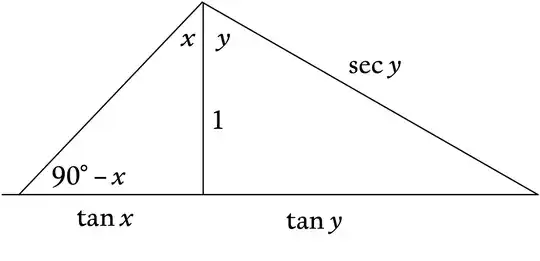Sorry I didn’t see this one earlier. When sitting in on high-school trigonometry classes, I’ve wondered about what the various proofs of sine addition might be, and which one might be the best. There is the purely geometric proof, which you know, but is no good for $x+y>90^\circ$. And there is the proof recommended by @intelligentipauca, involving a minimum of geometry but a great load of algebraic manipulation, and which ends up with no intuition on the student’s part. Here’s a proof that’s in between, involving a minimum of geometry, of trigonometry, and of algebra. It’s only good for $x<90^\circ$, similarly for $y$, but $x+y$ can be anything smaller than $180^\circ$.
Start with a horizontal line, and erect a perpendicular segment on it, and call its length $1$. Draw angles $x$ and $y$ sharing the perpendicular, but on opposite sides, so that they make an angle of $x+y$ together.

Now you see that the two horizontal segments are $\tan x$ and $\tan y$, and that the right-hand hypotenuse is $\sec y$.
Next, call in the Law of Sines, according to which
\begin{align}
\frac{\sin(x+y)}{\tan x + \tan y}&=\frac{\sin(90^\circ-x)}{\sec y}\\
&=\cos x\cos y\,.
\end{align}
Now multiply both sides by $\tan x+\tan y$ and get $\sin(x+y)=(\tan x+\tan y)\cos x\cos y$. And there’s your addition formula for sines.
